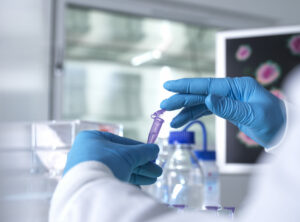This project aims to look at metabolic traps in central carbon metabolism that lead to observed altered energy production pathways in ME/CFS.
Christopher Armstrong, PhD
Rob Phair, PhD
One of the key metabolic theses aiming to explain ME/CFS symptoms is the dysregulated nitrogen metabolism theory proposed by Armstrong and colleagues. Three features of this theory make it attractive:
1) it is consistent with the observed shift from carbohydrate to alternative sources of energy (amino acids and fatty acids),
2) it predicts a reduction in oxygen consumption consistent with a hypometabolic state, and
3) it predicts overproduction of ammonia, a known neurotoxin that could explain ME/CFS neurological symptoms. One underdeveloped aspect of the nitrogen metabolism theory of ME/CFS is the mechanistic chain of events connecting the initial infectious or traumatic trigger to a chronically altered state of central carbon and mitochondrial metabolism.
This computational proposal aims to fill that gap by testing mechanisms that have the potential for switch-like or bistable behavior.

Donate your appreciated stock directly to OMFCA and you can receive an immediate income-tax deduction for the fair market value of the securities on the date of transfer (even if you originally paid much less for them).
OMFCA sells your securities and uses the proceeds to support our mission. You also do not pay capital gains tax on the transfer when the stock is sold. Giving appreciated stock can be more beneficial than giving cash. The “cost” of your gift is often less than the deduction you gain by making it. In advance, thank you for making this generous gift.
Gifting of Stock Instructions
Brokerage/Investment Firm: TD Waterhouse
Name on the Account: Open Medicine Foundation Canada
Account Number: 20LRHLA
OMFCA Canadian Revenue Agency (CRA) charity registration #: 74926 5518 RR0001
OMF Canada Registered Address:
Open Medicine Foundation Canada
2987 Baynes Road, Victoria, BC V8N-1Y4
Phone Number: 416-848-0055
Please speak to your personal tax advisor and then call OMFCA at 650-242-8669 to notify us of your donation or with any questions.